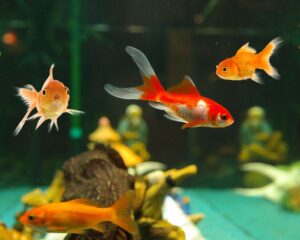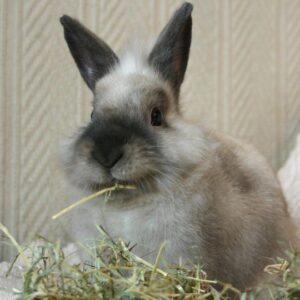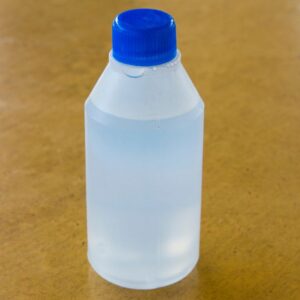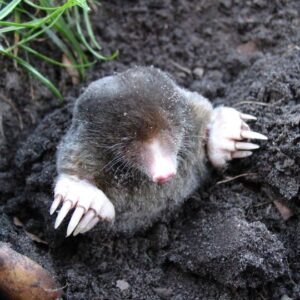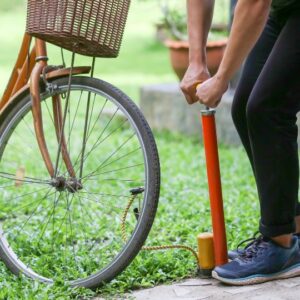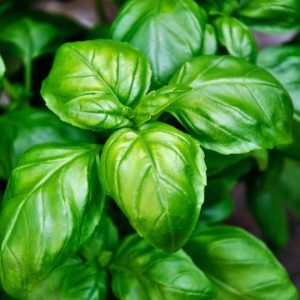Growing vegetables in your own vegetable garden
It is good for the environment and your own wallet to grow your own vegetables in your own vegetable garden. When you grow your own vegetables, you know exactly what is in them and what the vegetables have been sprayed and fertilized with. Usually this is healthier than in the supermarket. Basically you only need seeds and plants for a vegetable garden, so this can be a savings. Of course, it does take quite a lot of time. By growing your own vegetables, you are less dependent on transportation and packaging materials, thus making a positive contribution to the environment. A vegetable garden provides the necessary relaxation. You are outside and in touch with nature. Being owned with your vegetable garden develops skills you didn’t have before. Also, it can often be cozy in a vegetable garden because some vegetable gardens are next to each other, you can share vegetables or work together in the garden. In short, a vegetable garden is good for your health, environment and socializing so start a vegetable garden today!
Own vegetables taste great!
What could be better than fresh vegetables from your own vegetable garden? By eating your own vegetables, you know exactly what pesticides have been used. You also know what mist you are using, you can choose not to use Artificial fertilizer but only natural manure and homemade compost. Home grown vegetables are super healthy for you and your family. Make sure you have a good plan so that not all your vegetables are ready at once. You can then enjoy fresh vegetables throughout the year.
Starting and maintaining an easy vegetable garden
Here is a step-by-step plan to help you start a vegetable garden:
- Choose a location: Choose a suitable location for your vegetable garden, preferably in a sunny spot with enough soil space.
- Determine the size: Decide how much space you have available and how big your vegetable garden should be. This will determine how many vegetables you can grow. Some vegetables need a lot of space such as zucchini.
- Prepare the soil: Prepare the soil for growing vegetables by fertilizing, watering and tilling it.
- Choose your vegetables: Choose vegetables you like to eat that are suitable for the climate and soil in your area. Make sure not to harvest everything at once.
- Make a plan: Make a plan for how you will plant the vegetables and how you will maintain them.
- Plant the vegetables: Follow the recommendations for planting and make sure they are planted correctly.
- Maintain the vegetable garden: Take care of the vegetable garden regularly by fertilizing, watering and weeding.
- Harvest and enjoy: Don’t wait too long to harvest your vegetables and enjoy the freshly picked and healthy food.
When should you start sowing and fertilizing your vegetable garden?
Having your own vegetable garden begins with proper planning and preparation. When is the right time to start sowing and fertilizing your vegetable garden?
The ideal start time depends on your location and the vegetables you want to grow. Many vegetable gardeners begin sowing indoors in winter or early spring. This gives the seedlings enough time to grow before summer arrives. It is important to know when to sow for each vegetable you want to grow.
Just before sowing, it is time to start fertilizing. This will give the vegetables the nutrition they need to grow and flourish. Organic fertilizers, such as compost or leaf litter, are the best choice. Fertilize again after about six weeks, or when the vegetables are about six feet tall. Each vegetable has specific needs, and some need more fertilizer than others.
What vegetables are easy to grow yourself?
There are many different vegetables that can be easily grown in a home garden, including tomatoes, lettuce, peppers, carrots, onions, radishes, zucchini, beans, spinach and herbs such as basil, parsley and chives. Each vegetable contains specific vitamins that are good for health. For example, tomato contains vitamin C, K and B6; lettuce contains vitamin K, A and C; bell bell pepper contains vitamin C, A and B6; carrots contain vitamin A and K; onions contain vitamin C; radishes contain vitamin C; zucchini contains vitamin C and K; beans contain vitamin B1, B6 and C; spinach contains vitamin K, A and C; basil contains vitamin K and C; parsley contains vitamin K, A and C; and chives contain vitamin C and A. It is important to note that the amounts of the vitamins can vary depending on factors such as climate, soil and how they are grown.
Fertilizing and watering
Fertilizing and watering are important aspects of maintaining a vegetable garden. Here’s what you need to know about both:
Fertilizing:
- Fertilization is the addition of nutrients to the soil to promote plant growth.
- There are different types of fertilizers, such as compost, nitrogen fertilizers, phosphates and potassium.
- It is important to use the right amount of fertilizer and to know which vegetables need which types.
- Overfertilizing can be harmful to the vegetables and soil, so follow the recommendations on the package.
Watering:
- Watering is giving plants water to help them grow and survive.
- How much water a vegetable garden needs depends on the type of vegetables, the weather and the soil.
- Overwatering can be harmful to the vegetables and soil, so water appropriately and in the right amount. It’s on the package of your vegetable seeds what is needed.
- Close-planted vegetable gardens need less water than sprawling vegetable gardens because they protect each other from evaporation.
By using the right amounts of fertilizer and water, you can ensure that your vegetables grow healthy and well.
Diseases and pests in your vegetable garden
Pests and diseases can affect the growth and productivity of your vegetable garden. Here are some ways to control them:
Diseases:
- Plant diseases are caused by fungi, bacteria or viruses.
- Preventive measures, such as avoiding excessively wet conditions and alternating crops, can help prevent diseases.
- If diseases do occur, you can use organic pesticides or chemical pesticides to control them.
- It is important to follow the recommendations on the package and consider the safety of products before using them.
Pests:
- Pests, such as aphids, slugs and moles, can affect plants and stunt their growth.
- Natural pest controls, such as birds and beneficial insects, can help control pests.
- You can also use biological or chemical pesticides to control pests.
- It is important to follow package recommendations and consider the safety of products before using them.
It is always recommended to take preventive measures and choose environmentally friendly solutions when controlling pests and diseases in your vegetable garden.
Harvesting
Harvesting and preserving vegetables from your vegetable garden is an important part of growing them. Here are some tips:
Harvesting:
- It is important to know when vegetables are ripe for harvesting.
- Some vegetables, such as lettuce and radishes, should be harvested when they are young and small. Other vegetables, such as squash and potatoes, should be ripe before harvesting.
- Harvest vegetables in the morning, when temperatures are lowest and humidity is highest.
- Use sharp cutting tools to harvest vegetables to avoid damage.
Storage:
- Some vegetables, such as lettuce and cucumber, can be stored in the refrigerator for several days. Other vegetables, such as potatoes and onions, should be kept in a dark, cool place.
- Most vegetables can also be frozen or preserved to keep them longer.
- It is important to store vegetables at appropriate temperatures and humidity levels to prevent them from spoiling quickly.
By following proper harvesting and storage practices, you can ensure that your vegetables stay as fresh as possible and that you can enjoy them all year round.
Recommended tools and materials for vegetable gardens
To grow a successful vegetable garden, it is important to have the right tools and materials. You’ll probably want to start by purchasing gardening gloves to prevent your hands from getting damaged from working in the soil. Next, a garden shovel, garden hoe and sneeze berry are needed to prepare the soil for planting. Pruning shears are useful for removing excess branches and leaves, while a water jug is essential for watering the vegetables.
In addition to tools, some materials are needed to build and maintain your vegetable garden. Garden soil and compost are important for creating rich soil, while mulch is useful to help retain water and prevent weeds. Seed materials are obviously necessary to start the vegetable garden, and planters can be useful for growing smaller vegetables. Fertilization is important to make sure your vegetables get enough nutrients, and pesticides (organic or chemical) may be needed to control pests. Finally, vegetable garden nets or tarps can be useful to protect against pests and birds.
By purchasing the right tools and materials, you will be better equipped to grow a vegetable garden that will yield plenty of vegetables.
Collaborate with other vegetable gardeners
Collaborating with other vegetable gardeners and sharing knowledge can be a great way to improve your vegetable gardening experience.
- Exchange knowledge and experience: By collaborating with other vegetable gardeners, you can benefit from their knowledge and experience and vice versa. For example, you can exchange tips and tricks on how to best grow vegetables, or how to control pests.
- Cooperation and responsibility: If you cooperate with other vegetable gardeners, you can help each other with vegetable garden maintenance, such as watering and fertilizing. This makes growing vegetables less time-consuming and more fun.
- Community: Sharing your love of vegetable gardening with others can lead to close friendships and a stronger sense of community.
- Variety of vegetables: When you work with other vegetable gardeners, you can ensure that a variety of vegetables grow in the vegetable garden, giving you the opportunity to try new vegetables.
Did you get excited and want your own vegetable garden? Then join a store near you where you can buy seeds for vegetables and fruits. The map below shows some locations.

